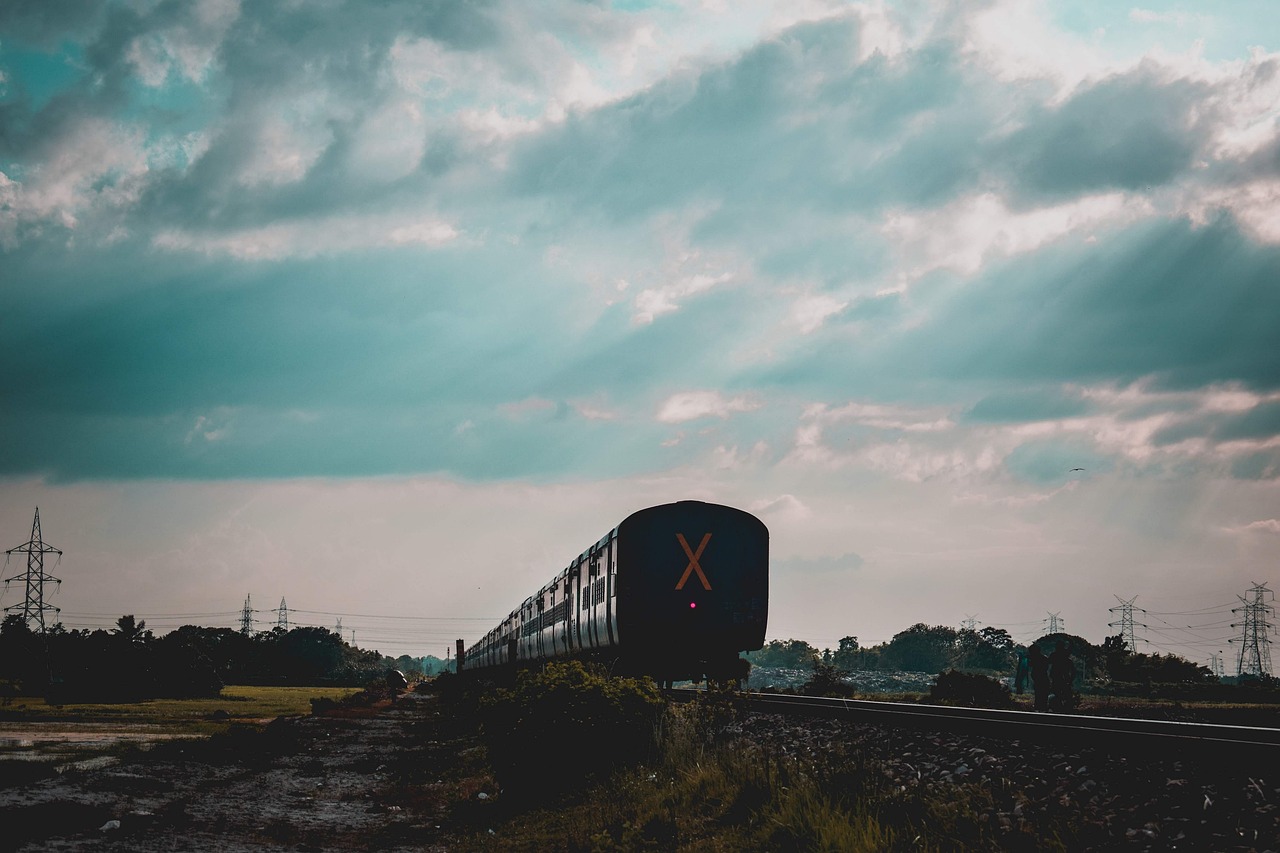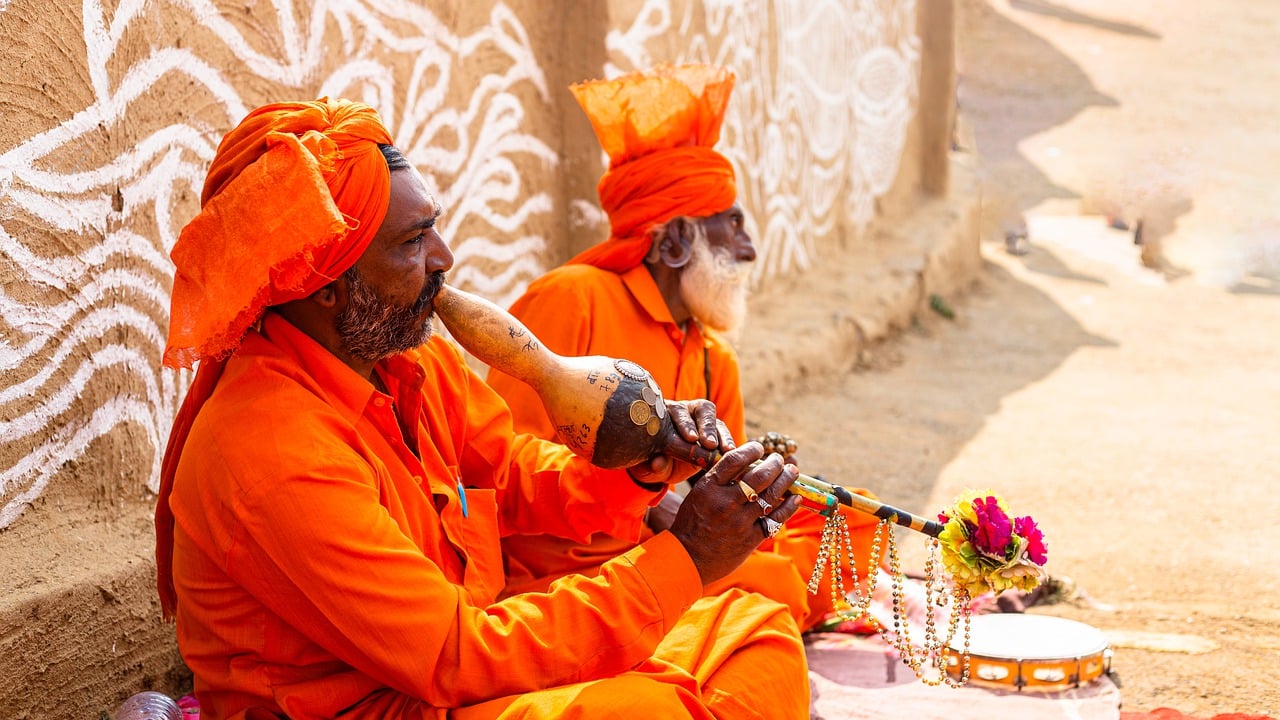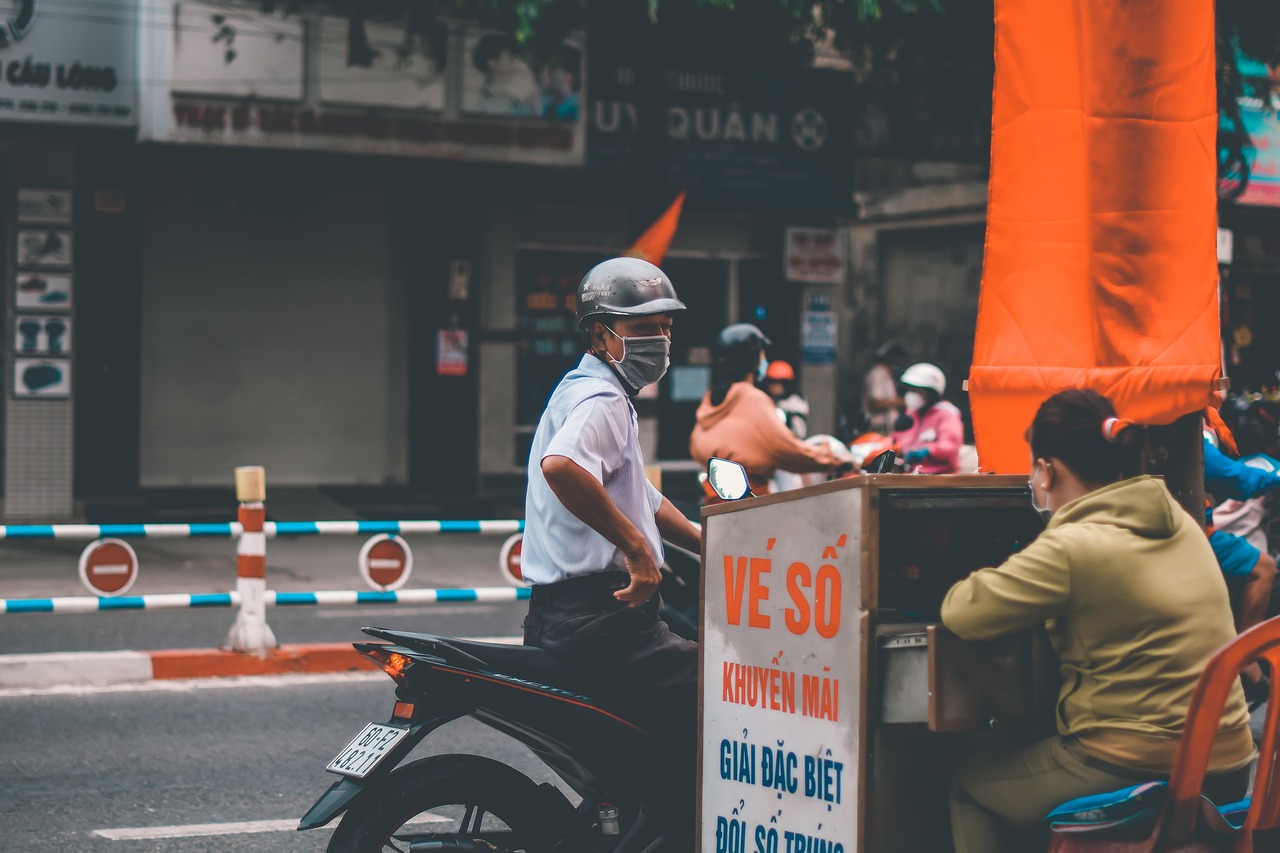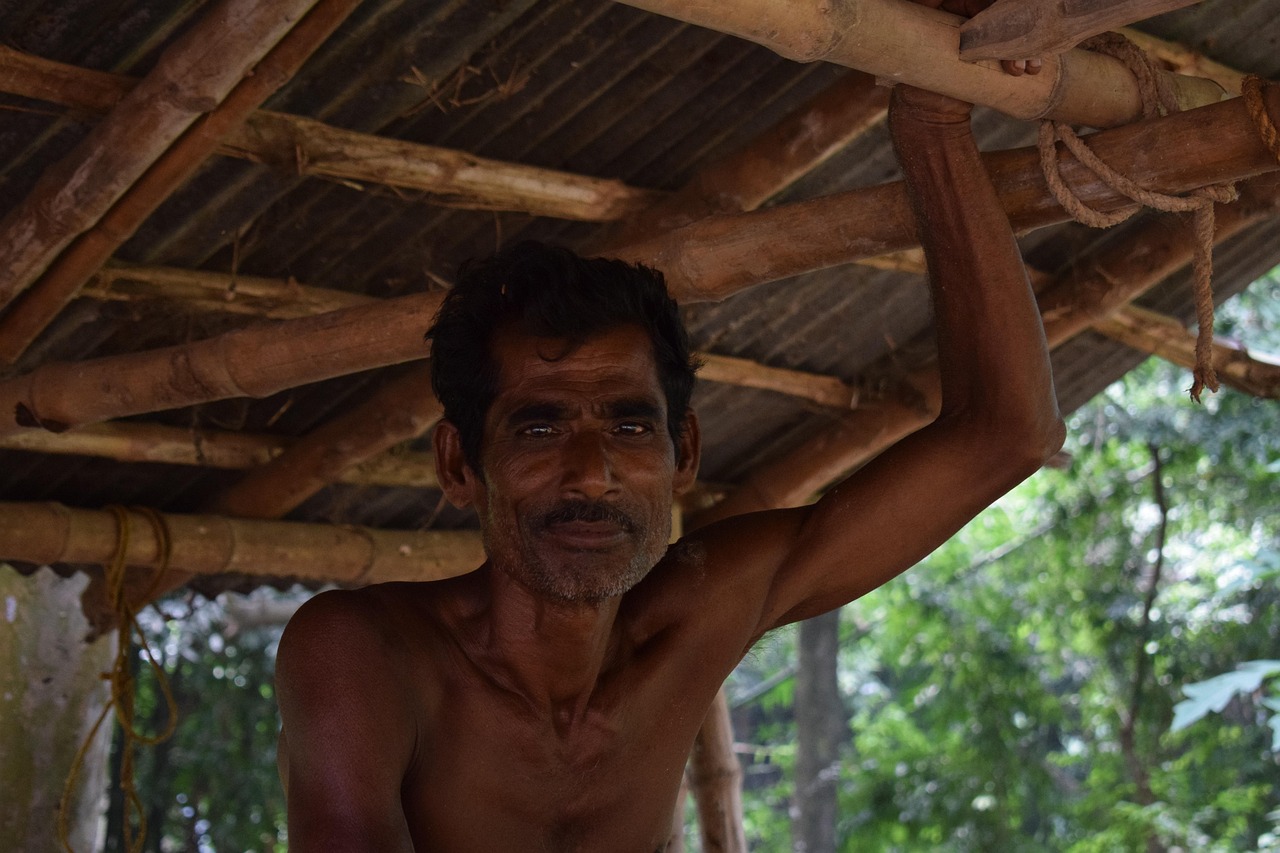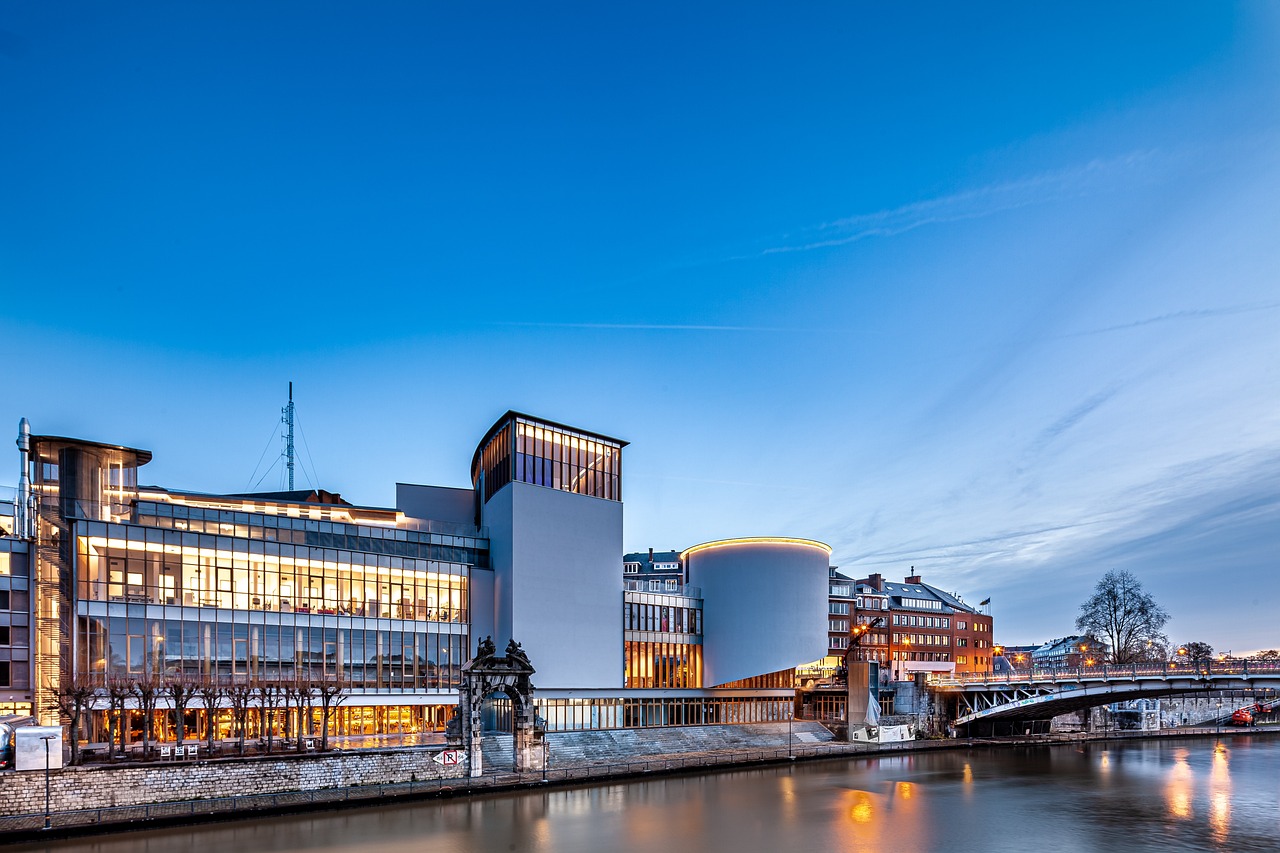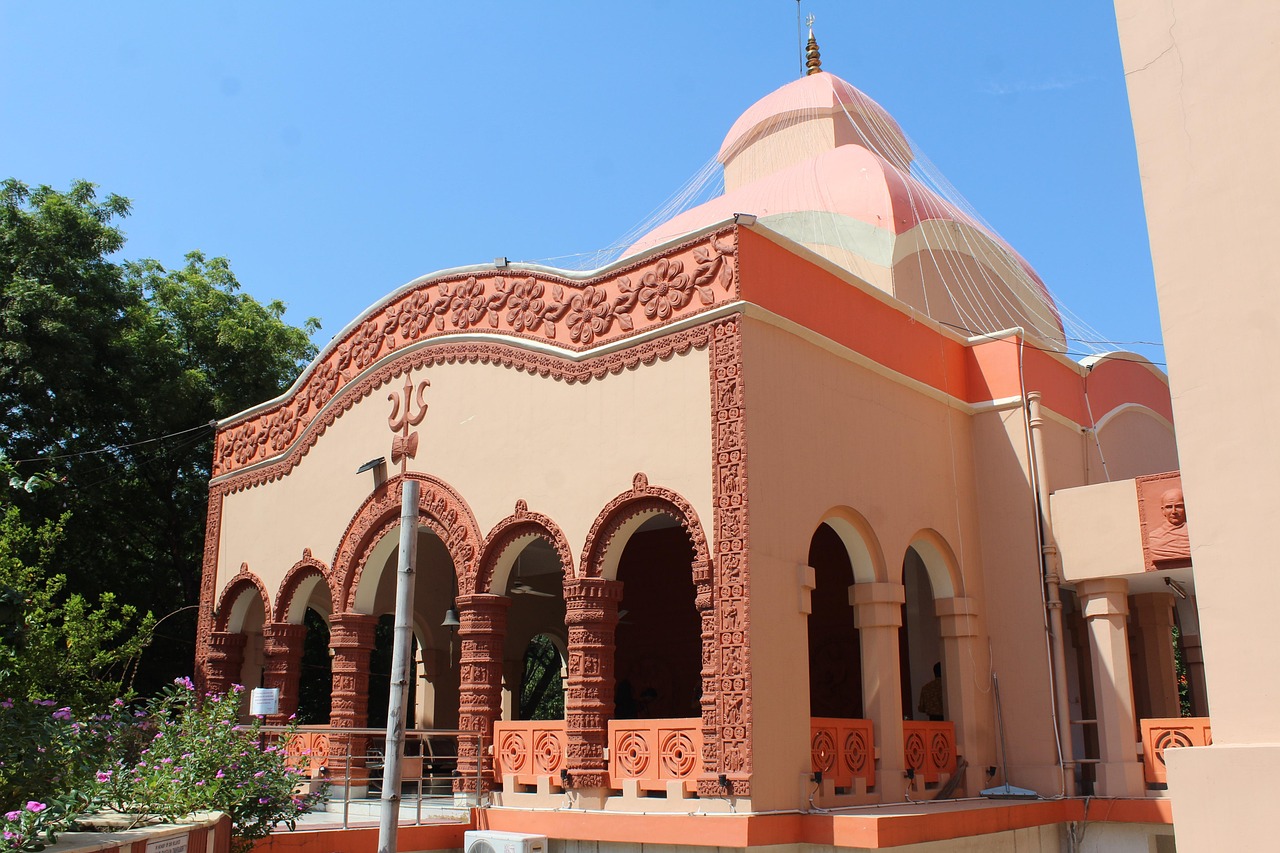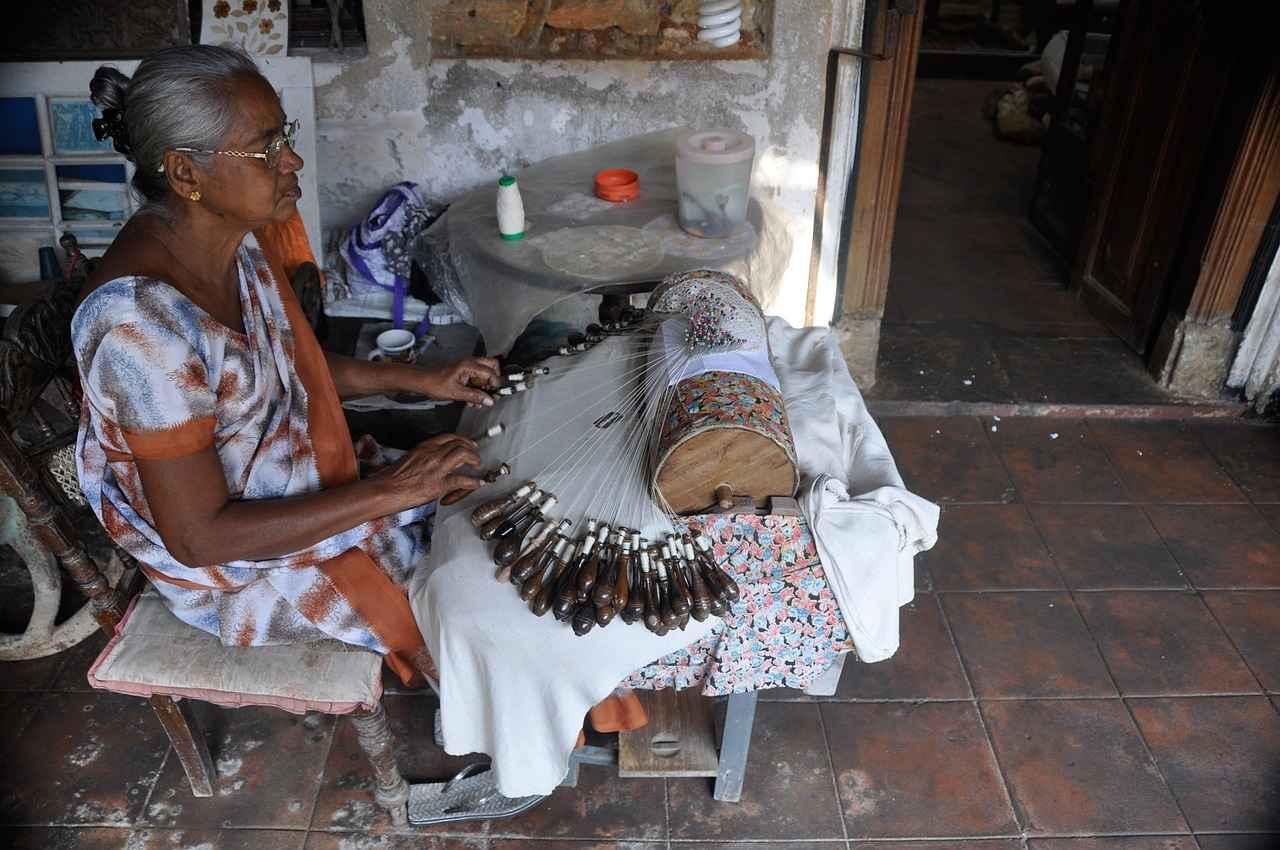This article delves into the dynamic political landscape of West Bengal, highlighting the significant influence of various political parties on the state’s governance, policies, and future trajectory. With a rich history of political engagement, West Bengal has been a stage for intense political rivalry, primarily between the Trinamool Congress (TMC), the Bharatiya Janata Party (BJP), and the Left Front.
The Historical Context of Political Parties in West Bengal
Understanding the historical roots of political parties in West Bengal provides essential insights into their current dynamics. The state has a legacy of political activism, with the Left Front ruling for over three decades until 2011, when the TMC emerged victorious. This shift marked a significant change in governance and policy-making.
The Dominance of the Trinamool Congress (TMC)
Since rising to power in 2011, the TMC has become a formidable force in West Bengal politics. Under the leadership of Chief Minister Mamata Banerjee, the party has focused on welfare schemes that address the needs of the marginalized.
- Key Achievements of the TMC: The TMC has implemented various development initiatives that have notably impacted the state’s socio-economic landscape.
- Welfare Programs: Numerous welfare programs have been launched to uplift economically disadvantaged sections of society.
- Infrastructure Development: Projects aimed at enhancing connectivity have been a priority, promoting economic growth across the state.
Challenges Faced by the TMC: Despite its achievements, the TMC grapples with challenges such as opposition from rival parties and governance-related issues.
The Role of the Bharatiya Janata Party (BJP)
The BJP has made significant strides in West Bengal, positioning itself as a key challenger to the TMC’s dominance. The party’s grassroots mobilization strategies and targeted campaigns have aimed to consolidate support among various demographics.
Impact of National Politics: National political trends have influenced the BJP’s approach in West Bengal, affecting local dynamics considerably.
The Left Front’s Resurgence Efforts
Once a dominant force, the Left Front is attempting to regain its foothold through strategic alliances and a renewed focus on its traditional support base.
- Coalition Politics: Forming coalitions has become a critical strategy for the Left Front to enhance its electoral prospects.
- Reviving Leftist Ideologies: The Left Front is working to rejuvenate its core ideologies while adapting to contemporary issues.
The Influence of Regional Parties: Regional parties play a crucial role in shaping local politics, often acting as kingmakers in elections.
Emerging Regional Players: New regional parties are surfacing, reflecting the diverse interests of various communities within West Bengal.
The Future of Political Alliances: The evolving nature of political alliances will significantly influence the governance and policy direction of West Bengal in the coming years.

The Historical Context of Political Parties in West Bengal
Understanding the historical roots of political parties in West Bengal is essential to grasp the complexities of their current dynamics and influence on the state’s political landscape. The evolution of these parties is deeply intertwined with the socio-economic and cultural fabric of the region, reflecting the aspirations and struggles of its people.
West Bengal has a rich political history that dates back to the pre-independence era, where the seeds of political organization were sown through various movements aimed at social reform and anti-colonial struggle. The Indian National Congress was the dominant force during the freedom struggle, advocating for independence and social justice. However, the political landscape began to shift dramatically in the 1960s with the rise of leftist ideologies, leading to the formation of the Left Front, which came to power in 1977 and maintained a stronghold for over three decades.
During this period, the Left Front implemented significant land reforms and focused on improving education and healthcare, which garnered substantial support from the rural population. However, by the early 2000s, dissatisfaction with the Left’s governance began to grow, primarily due to issues like political violence and economic stagnation.
The emergence of the Trinamool Congress (TMC) in 1998 marked a significant turning point in West Bengal’s political arena. Under the leadership of Mamata Banerjee, the TMC capitalized on the growing discontent with the Left Front, eventually leading to their victory in the 2011 state elections. This shift not only reflected a change in voter sentiment but also highlighted the importance of regional parties in shaping the state’s political future.
Today, political parties in West Bengal, including the BJP and various regional entities, continue to evolve, responding to the changing needs and aspirations of the populace. Understanding this historical context is crucial for analyzing current political trends and forecasting future developments in West Bengal’s governance and policy-making.

The Dominance of the Trinamool Congress (TMC)
Since its rise to power in 2011, the Trinamool Congress (TMC) has established itself as a formidable force in West Bengal politics. Under the leadership of Chief Minister Mamata Banerjee, the party has not only influenced governance but has also reshaped the socio-political landscape of the state.
One of the key factors contributing to the TMC’s dominance is its ability to connect with the grassroots. The party has focused on issues that resonate with the common people, such as welfare schemes, infrastructure development, and employment opportunities. This approach has enabled the TMC to build a strong support base among various demographics, particularly among the youth and marginalized communities.
- Welfare Programs: The TMC government has launched numerous initiatives aimed at improving the quality of life for the economically disadvantaged. Programs such as Kanyashree, which provides financial support for girls’ education, have gained widespread acclaim.
- Infrastructure Development: Significant investments in infrastructure, including roads, bridges, and public transport, have enhanced connectivity and boosted economic growth across the state.
Despite its achievements, the TMC faces several challenges. Opposition parties, particularly the Bharatiya Janata Party (BJP), have been vocal in their criticism, questioning the effectiveness of TMC’s governance. Additionally, issues related to corruption and public perception have emerged as hurdles for the party.
Looking ahead, the TMC will need to navigate these challenges while continuing to deliver on its promises to the people of West Bengal. The party’s ability to maintain its dominance will depend on its responsiveness to public concerns and its capacity to adapt to the evolving political landscape.
In conclusion, the TMC’s impact on West Bengal politics is undeniable. As the party continues to shape policies and governance, its future will be closely watched by both supporters and critics alike.
Key Achievements of the TMC
The Trinamool Congress (TMC) has made remarkable strides in transforming the socio-economic landscape of West Bengal since it came to power in 2011. Through a series of targeted welfare schemes and development initiatives, the TMC has aimed to uplift marginalized communities and stimulate economic growth across the state.
Among the key achievements of the TMC, the following initiatives stand out:
- Improved Healthcare Access: The TMC has launched programs like Swasthya Sathi, providing health insurance to millions of families, ensuring access to quality healthcare.
- Education Initiatives: The government has focused on enhancing educational infrastructure, introducing schemes such as Kanyashree Prakalpa, which incentivizes girls to continue their education, thereby reducing dropout rates.
- Women Empowerment: The TMC has implemented various schemes to empower women, including financial support for self-help groups, promoting entrepreneurship among women.
- Rural Development: Initiatives like Pradhan Mantri Awas Yojana have been promoted to provide affordable housing, thereby improving living conditions in rural areas.
- Infrastructure Development: The TMC has invested heavily in infrastructure, enhancing roads, bridges, and public transport systems, facilitating better connectivity and economic opportunities.
These initiatives reflect the TMC’s commitment to fostering inclusive growth and addressing the pressing needs of the state’s population. By focusing on welfare and development, the TMC aims to create a sustainable future for West Bengal.
In conclusion, the TMC’s achievements in welfare and development have significantly impacted the lives of many in West Bengal, showcasing the party’s dedication to improving the socio-economic fabric of the state.
Welfare Programs and Initiatives
The Trinamool Congress (TMC) has been a pivotal force in West Bengal’s political landscape since its inception. One of the most significant aspects of its governance has been the implementation of various welfare programs aimed at uplifting the marginalized and economically disadvantaged sections of society. These initiatives reflect the party’s commitment to social justice and economic equity.
The TMC government has introduced a range of programs designed to address the needs of the underprivileged. For instance, the Kanyashree Prakalpa scheme empowers young girls by providing financial assistance for education and incentivizing them to stay in school. This initiative not only promotes gender equality but also aims to reduce child marriage rates.
Another notable program is the Rupashree Prakalpa, which offers financial support to families for the marriage of their daughters, thereby reducing the economic burden associated with weddings. Such initiatives are crucial in a state where many families struggle to afford basic necessities.
| Welfare Program | Objective | Target Beneficiaries |
|---|---|---|
| Kanyashree Prakalpa | Promote education among girls | Young girls from economically disadvantaged families |
| Rupashree Prakalpa | Financial assistance for marriages | Families with daughters |
| Krishak Bandhu | Support farmers | Small and marginal farmers |
Additionally, the Krishak Bandhu scheme provides financial aid and insurance to farmers, aiming to enhance agricultural productivity and ensure food security. By addressing the needs of farmers, the TMC is fostering economic stability in rural areas.
These welfare programs are not just isolated initiatives; they represent a comprehensive strategy aimed at transforming the socio-economic fabric of West Bengal. The TMC’s focus on inclusive development highlights its commitment to ensuring that no one is left behind in the state’s progress.
In conclusion, the TMC’s welfare programs are instrumental in shaping a more equitable society in West Bengal. By prioritizing the needs of the marginalized, the government is laying the groundwork for sustainable development and social harmony.
Infrastructure Development
has been a cornerstone of the Trinamool Congress (TMC) government’s strategy to foster economic growth and enhance connectivity throughout West Bengal. Since assuming power in 2011, the TMC has prioritized various infrastructure projects aimed at modernizing the state’s transport and communication networks. These initiatives are crucial for not only improving accessibility but also for boosting trade and investment opportunities.
The TMC has launched several key projects, including:
- Road Expansion and Maintenance: The government has invested heavily in expanding and maintaining road networks, ensuring better connectivity between urban and rural areas.
- Bridge Construction: New bridges are being constructed to facilitate smoother transportation, particularly in remote regions that were previously underserved.
- Public Transport Enhancement: Initiatives such as the introduction of modern buses and the development of metro rail systems in major cities aim to reduce traffic congestion and promote sustainable urban transport.
- Digital Infrastructure: The TMC has also focused on improving digital connectivity, which is vital for modern businesses and educational institutions.
These infrastructure projects not only enhance connectivity but also create job opportunities, thus driving economic growth across the state. By improving access to markets, education, and healthcare, the TMC’s initiatives contribute significantly to the overall development of West Bengal.
Furthermore, the emphasis on infrastructure development aligns with the TMC’s broader vision of transforming West Bengal into a hub of economic activity, attracting investments from both domestic and international sources. As the state continues to evolve, the impact of these projects will be pivotal in shaping its future trajectory.
In conclusion, the TMC’s focus on infrastructure development represents a strategic approach to not only improve the quality of life for its citizens but also to lay the groundwork for sustainable economic growth in West Bengal.
Challenges Faced by the TMC
The political landscape in West Bengal is a dynamic and multifaceted arena, where the Trinamool Congress (TMC) has carved out a significant presence since its rise to power in 2011. However, despite its notable achievements, the TMC faces a myriad of challenges that could shape its future and influence the state’s governance.
One of the primary challenges confronting the TMC is opposition from rival parties. The Bharatiya Janata Party (BJP) has emerged as a formidable contender, leveraging grassroots mobilization and targeted campaigns to expand its influence. This has created a competitive political environment, necessitating the TMC to continuously adapt its strategies to maintain its dominance.
Furthermore, issues related to governance have also surfaced. Critics have pointed out instances of bureaucratic inefficiencies and corruption within the TMC administration, which have raised questions about the party’s commitment to transparency and accountability. Such governance challenges can erode public trust, making it essential for the TMC to address these concerns proactively.
Another significant aspect is public perception. While the TMC has implemented various welfare schemes aimed at benefiting marginalized communities, the effectiveness and reach of these programs have been scrutinized. Public sentiment can be volatile, and any perceived shortcomings in governance can lead to disillusionment among voters, impacting the party’s electoral prospects.
Moreover, the TMC must navigate the complexities of regional aspirations and emerging local parties that reflect diverse community interests. The rise of new political entities can dilute the TMC’s support base, compelling it to reassess its alliances and policy priorities.
In conclusion, while the TMC has achieved significant milestones in West Bengal, the challenges of political opposition, governance issues, and public perception remain critical hurdles. Addressing these challenges effectively will be vital for the TMC to sustain its influence and continue shaping the state’s future.

The Role of the Bharatiya Janata Party (BJP)
The Bharatiya Janata Party (BJP) has emerged as a significant political force in West Bengal, challenging the long-standing dominance of the Trinamool Congress (TMC). This shift in the political landscape is not merely a result of changing voter preferences but is also influenced by strategic initiatives and national political trends.
In recent years, the BJP has effectively utilized a combination of grassroots mobilization and targeted campaigns to enhance its presence in the state. By focusing on key demographics such as the youth, women, and marginalized communities, the party has successfully consolidated support across various sections of the population. The BJP’s approach involves not just traditional campaigning but also leveraging social media platforms to engage with voters directly.
Impact of National Politics on State Dynamics
The BJP’s strategies in West Bengal are closely aligned with its national agenda. Policies and narratives that resonate on a national level, such as development, nationalism, and welfare, have been adapted to suit local contexts. This alignment has allowed the BJP to present itself as a viable alternative to the TMC, particularly among voters disillusioned with the incumbent party’s governance.
Challenges and Opportunities
Despite its growing influence, the BJP faces several challenges in West Bengal. The TMC continues to maintain a strong grassroots presence, and issues such as communal tensions and regional identity politics can complicate the BJP’s efforts. However, the party’s ability to navigate these challenges will be crucial in determining its future success in the state.
Conclusion
In conclusion, the BJP’s role in West Bengal is characterized by a dynamic interplay of strategies aimed at challenging the TMC’s dominance. As political alliances shift and voter sentiments evolve, the BJP’s influence is likely to shape the future political landscape of West Bengal significantly.
BJP’s Political Strategy in West Bengal
The Bharatiya Janata Party (BJP) has adopted multifaceted strategies to strengthen its presence in West Bengal, a state traditionally dominated by the Trinamool Congress (TMC). This article delves into the intricacies of the BJP’s political maneuvers, focusing on grassroots mobilization and targeted campaigns that aim to consolidate support across diverse demographics.
One of the key aspects of the BJP’s approach has been its grassroots mobilization. The party has effectively engaged local communities through a network of volunteers and party workers who resonate with the issues faced by the people. This direct engagement allows the BJP to build a rapport with the electorate, ensuring that their voices are heard and their concerns are addressed. By organizing local events, rallies, and community meetings, the BJP has been able to create a sense of belonging and ownership among voters.
In addition to grassroots efforts, the BJP has implemented targeted campaigns that focus on specific demographic groups, including women, youth, and marginalized communities. These campaigns are meticulously designed to highlight the party’s policies and initiatives that cater to the unique needs of these groups. For instance, the BJP has promoted schemes aimed at women’s empowerment, such as skill development programs and financial assistance, which have garnered positive responses from women voters.
The BJP’s strategy also involves leveraging social media platforms to reach a broader audience. By utilizing digital marketing techniques, the party has successfully engaged younger voters, who are increasingly relying on online platforms for information. This digital outreach complements traditional campaigning methods, creating a comprehensive strategy that enhances the party’s visibility and appeal.
Overall, the BJP’s political strategy in West Bengal is characterized by a blend of grassroots mobilization and targeted campaigns aimed at consolidating support among various demographics. As the political landscape continues to evolve, these strategies will play a crucial role in shaping the party’s future in the state.
Impact of National Politics on State Dynamics
The political landscape of West Bengal has been significantly shaped by the national policies and strategies of the Bharatiya Janata Party (BJP). As the party seeks to expand its influence in the state, it has adopted a multifaceted approach that resonates with local sentiments while aligning with broader national objectives. This article delves into how national political trends from the BJP have influenced its strategies in West Bengal, thereby affecting the local political dynamics.
One of the key strategies employed by the BJP in West Bengal is grassroots mobilization. By engaging with local communities and addressing their specific needs, the party has managed to build a strong support base. This approach is crucial in a state where regional identity plays a significant role in politics. The BJP’s emphasis on development and infrastructure projects has also resonated with voters, as they seek tangible improvements in their lives.
Moreover, the BJP has strategically positioned itself as a counter-narrative to the ruling Trinamool Congress (TMC). By highlighting issues such as corruption and governance failures, the BJP aims to sway public opinion in its favor. The party’s national leadership has also played a pivotal role in crafting policies that appeal to the electorate in West Bengal, thereby ensuring that local strategies align with national goals.
As a result, the BJP’s influence has led to a shift in the political dynamics of West Bengal. The traditional dominance of the TMC is being challenged, leading to a more competitive electoral environment. This shift not only impacts party strategies but also affects voter behavior, as citizens become more engaged in the political process.
In conclusion, the interplay between national political trends and local dynamics in West Bengal underscores the complexity of the state’s political landscape. The BJP’s approach, informed by national policies, has significantly impacted local governance and electoral strategies, setting the stage for a more dynamic political future in West Bengal.

The Left Front’s Resurgence Efforts
The Left Front, once a formidable political force in West Bengal, is actively working to reclaim its influence in the state’s political landscape. This resurgence is driven by a combination of strategic alliances and a renewed focus on its traditional support bases, which historically included the working class and rural communities.
- Strategic Alliances: Recognizing the need for collaboration, the Left Front has begun to forge alliances with smaller parties and like-minded organizations. These coalitions aim to consolidate votes and present a united front against the dominant Trinamool Congress (TMC) and the Bharatiya Janata Party (BJP).
- Focus on Traditional Support Bases: The Left Front is re-engaging with its core voter demographic, emphasizing issues that resonate with laborers, farmers, and the economically disadvantaged. By addressing local concerns and advocating for social justice, the Left Front hopes to rekindle the loyalty of its former supporters.
- Revitalizing Ideological Foundations: The party is working to revive its foundational ideologies, which include socialism and secularism, while adapting these principles to contemporary challenges. This approach aims to attract younger voters who may feel disconnected from traditional leftist politics.
In addition to these strategies, the Left Front is also focusing on grassroots mobilization, utilizing social media and community engagement to spread its message. By fostering a sense of community and activism, the party hopes to rebuild its base and challenge the current political hegemony.
Overall, the Left Front’s efforts to regain its foothold in West Bengal highlight the dynamic nature of the state’s political environment. As the party navigates the complexities of modern politics, its ability to adapt and resonate with the electorate will be crucial to its success.
Coalition Politics and Alliances
In the ever-evolving political landscape of West Bengal, forming coalitions has emerged as a pivotal strategy for the Left Front. This approach is not merely a tactical maneuver but a fundamental shift aimed at enhancing electoral prospects and effectively challenging the dominance of the Trinamool Congress (TMC) and the Bharatiya Janata Party (BJP).
The Left Front, historically a significant player in West Bengal politics, has recognized the necessity of collaboration with other parties. By aligning with like-minded groups, they aim to consolidate their voter base and amplify their influence. This strategy is crucial, especially in a state where the political dynamics have shifted dramatically in recent years.
One of the key advantages of coalition politics is the ability to pool resources and share campaign strategies. For the Left Front, this means leveraging the strengths of various regional parties and smaller factions that resonate with their core ideologies. Such collaborations can create a formidable front against the TMC and BJP, both of which have established significant footholds in the state.
Moreover, forming alliances allows the Left Front to reach out to diverse voter segments, which is essential in a state characterized by its rich tapestry of cultures and communities. By addressing the specific needs and aspirations of different groups, the Left Front can enhance its appeal and re-establish itself as a viable alternative to the current ruling parties.
However, coalition politics is not without its challenges. The Left Front must navigate the complexities of differing ideologies, priorities, and electoral strategies among its allies. Effective communication and negotiation will be key to maintaining unity and ensuring that the coalition remains focused on common goals.
In conclusion, the Left Front’s strategy of forming coalitions is a critical component of its efforts to regain relevance in West Bengal’s political arena. By embracing collaborative politics, they not only enhance their electoral prospects but also foster a more inclusive political environment that can better address the diverse needs of the state’s population.
Reviving Leftist Ideologies
The Left Front in West Bengal is undergoing a significant transformation as it strives to reconnect with its core ideologies and policies. This initiative is not merely about nostalgia; it is a calculated effort to resonate with the traditional voter base while simultaneously adapting to the contemporary challenges faced by the state.
Historically, the Left Front has been synonymous with social justice, land reforms, and workers’ rights. However, in recent years, its influence has waned, leading to a pressing need for revitalization. To achieve this, the Left Front is engaging in a two-pronged strategy:
- Reaffirming Core Ideologies: The Left Front is revisiting its foundational principles, emphasizing equity, social welfare, and grassroots participation. This re-emphasis aims to rekindle the trust of its long-time supporters who feel disillusioned by current political dynamics.
- Addressing Contemporary Issues: In addition to its traditional policies, the Left Front is keenly aware of the need to address pressing modern issues such as climate change, digital economy, and youth unemployment. By integrating these topics into their agenda, they aim to attract younger voters who prioritize these concerns.
Furthermore, the Left Front is actively engaging in community outreach programs to better understand the needs and aspirations of the electorate. This approach not only helps in rebuilding their voter base but also fosters a sense of community involvement and ownership among the populace.
As the political landscape in West Bengal continues to evolve, the Left Front’s ability to balance its rich legacy with the demands of today will be crucial in determining its future relevance. This revival effort is not just about winning elections; it is about redefining the party’s role in a rapidly changing society.
In conclusion, the Left Front’s journey towards reviving its ideologies represents a critical chapter in West Bengal’s political narrative. By embracing both tradition and innovation, the party hopes to reclaim its position as a significant player in the state’s governance and policy-making processes.

The Influence of Regional Parties
In the complex political landscape of West Bengal, regional parties have emerged as pivotal players, significantly shaping the state’s governance and electoral outcomes. These parties often act as kingmakers, leveraging their influence to sway elections and policy decisions in favor of their constituencies. This article delves into the role of these regional entities, highlighting their impact on local politics and the broader implications for West Bengal’s future.
- Historical Significance: Regional parties in West Bengal have deep-rooted historical significance, often reflecting the socio-economic aspirations of specific communities.
- Electoral Dynamics: In recent elections, these parties have played a crucial role in determining outcomes, often forming coalitions that can tip the balance of power.
- Policy Influence: Beyond elections, regional parties actively influence policy decisions, advocating for local interests that may be overlooked by larger national parties.
A notable example is the Gorkha Janmukti Morcha, which represents the interests of the Gorkha community in the Darjeeling hills. Their demands for autonomy and recognition have shaped regional policies and governance.
Moreover, the Indian Secular Front has emerged as a significant player, focusing on minority rights and social justice, further diversifying the political discourse in West Bengal.
As these regional parties continue to evolve, their ability to forge alliances and address the unique challenges faced by their constituents will be critical. The future of West Bengal’s political landscape will depend on how these parties navigate the interplay between local aspirations and the overarching influence of national politics.
In conclusion, the influence of regional parties in West Bengal is profound, as they not only shape electoral outcomes but also play a crucial role in policy formulation. Their continued relevance in the state’s political arena underscores the importance of local governance and representation in a rapidly changing political environment.
Emerging Regional Players
In recent years, West Bengal has witnessed the emergence of several regional parties, each reflecting the unique aspirations and interests of diverse communities. These parties are not merely splinter groups; they represent a significant shift in the political landscape, challenging the traditional dominance of established parties like the Trinamool Congress (TMC) and the Bharatiya Janata Party (BJP).
These new regional entities are often formed in response to the specific needs and grievances of local populations. For instance, parties focusing on ethnic identities, cultural preservation, and economic development have gained traction. This trend has led to a more fragmented political environment, where smaller parties can wield considerable influence, especially in coalition scenarios.
| Party Name | Key Focus Areas | Recent Achievements |
|---|---|---|
| Gorkha Janmukti Morcha | Gorkhaland, cultural rights | Increased representation in local governance |
| Jammu and Kashmir People’s Conference | Regional autonomy, youth empowerment | Successful grassroots mobilization |
| Indian Secular Front | Secularism, minority rights | Electoral gains in minority-dominated areas |
These parties are becoming increasingly significant in elections, often acting as kingmakers by influencing the outcomes in tight races. Their ability to mobilize voters around localized issues has reshaped the electoral strategies of larger parties, forcing them to address community-specific concerns.
Moreover, the rise of these regional players has implications for governance in West Bengal. As they gain seats in legislative assemblies, they bring new perspectives and priorities to the table, which can lead to more inclusive policy-making. This shift can enhance the representation of marginalized voices, contributing to a more balanced political discourse.
In conclusion, the emergence of regional parties in West Bengal signifies a critical evolution in the state’s political dynamics. These parties are not just challenging the status quo but are also enriching the political dialogue, ensuring that diverse community interests are represented in the governance process. As the political landscape continues to evolve, the role of these regional players will be pivotal in shaping West Bengal’s future.
The Future of Political Alliances in West Bengal
The political landscape in West Bengal is undergoing a significant transformation, driven by the evolving nature of alliances among various parties. This shift is poised to play a crucial role in shaping the state’s governance and policy direction in the years to come.
Historically, West Bengal’s political scene has been dominated by a few key players, including the Trinamool Congress (TMC), Bharatiya Janata Party (BJP), and the Left Front. However, as the political dynamics change, the formation of new alliances and coalitions is becoming more prevalent, reflecting the diverse interests of the electorate.
Impact of Political Alliances on Governance
- Coalition Building: Political parties are increasingly recognizing the importance of forming coalitions to enhance their electoral prospects. The TMC, for instance, may seek alliances with smaller regional parties to consolidate its power against the BJP’s growing influence.
- Policy Direction: The nature of these alliances will directly impact policy decisions. For example, a coalition that includes regional parties may prioritize local issues, leading to more grassroots-level governance.
- Electoral Strategy: Parties are adapting their strategies to reflect the changing demographics and political sentiments of voters, making alliances essential for winning elections.
Challenges and Opportunities
- Opposition Dynamics: As parties like the BJP continue to challenge the TMC, the latter must navigate its alliances carefully to maintain its governance.
- Voter Sentiment: The evolving alliances must resonate with the electorate’s aspirations, focusing on issues such as employment, education, and healthcare.
In conclusion, the future of political alliances in West Bengal is likely to be characterized by strategic collaborations that reflect the state’s diverse political landscape. As parties navigate these changes, the implications for governance and policy will be profound, making it essential for stakeholders to engage actively in this evolving discourse.
Frequently Asked Questions
- What are the major political parties in West Bengal?
West Bengal’s political landscape is primarily dominated by the Trinamool Congress (TMC), the Bharatiya Janata Party (BJP), and the Left Front. Each party plays a unique role in shaping the state’s governance and policies.
- How has the TMC influenced West Bengal’s development?
The TMC has implemented numerous welfare schemes and infrastructure projects since coming to power in 2011, significantly impacting the socio-economic conditions of the state and improving the lives of many residents.
- What challenges does the TMC face?
Despite its achievements, the TMC faces challenges such as strong opposition from rival parties, issues related to governance, and public perception that can affect its political standing.
- What role does the BJP play in West Bengal?
The BJP has emerged as a formidable opponent to the TMC, utilizing grassroots mobilization and targeted campaigns to gain support, especially among various demographics in the state.
- Is the Left Front making a comeback?
The Left Front is attempting to regain its influence through strategic alliances and a renewed focus on its core ideologies, aiming to connect with its traditional voter base while adapting to modern issues.
- How do regional parties impact West Bengal politics?
Regional parties play a critical role in West Bengal, often acting as kingmakers in elections and influencing policy decisions, reflecting the diverse interests of various communities in the state.






